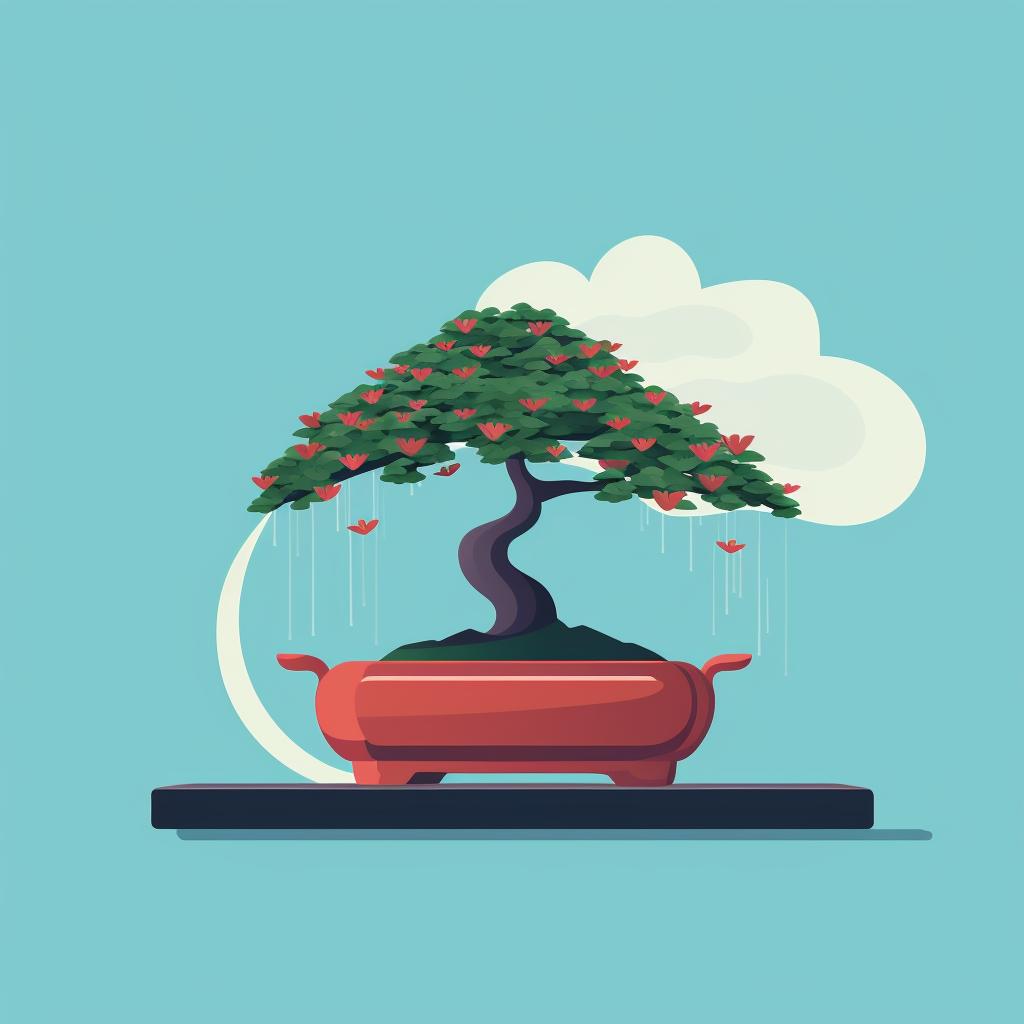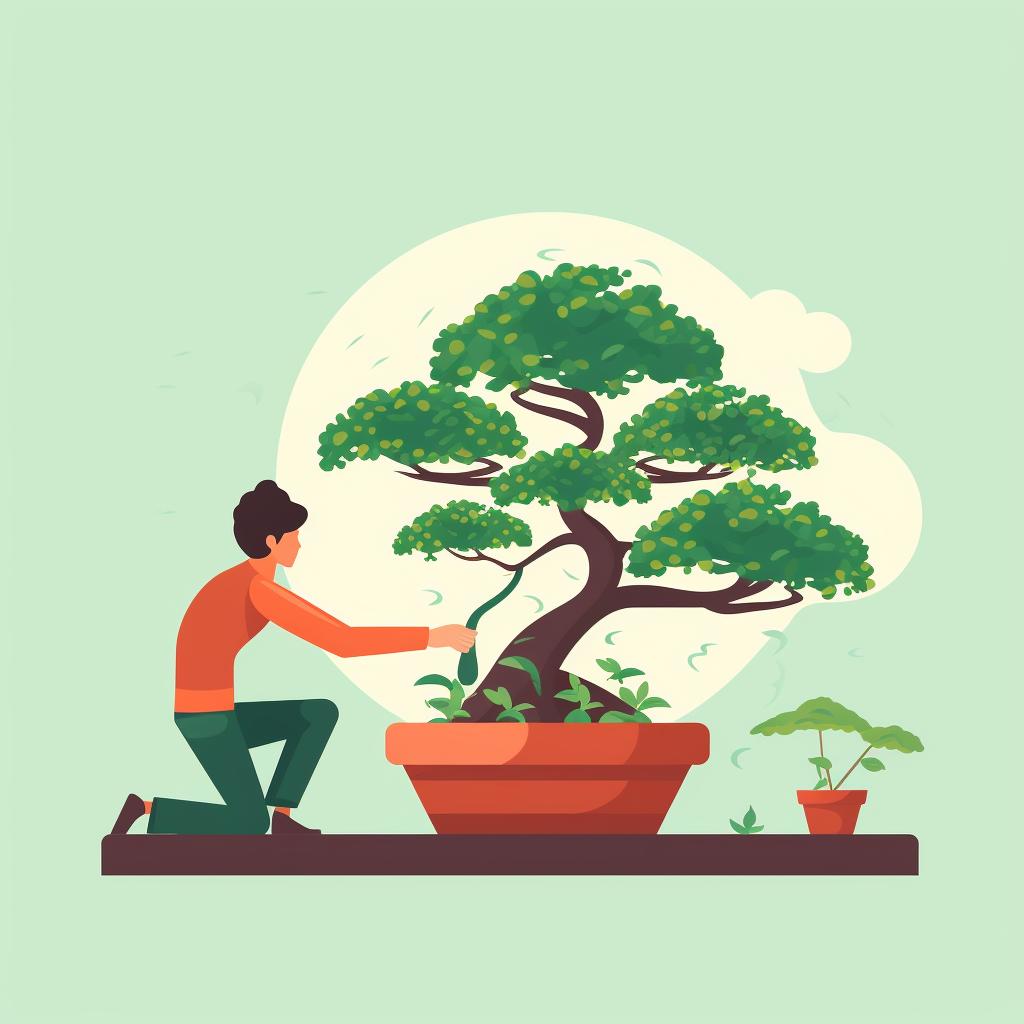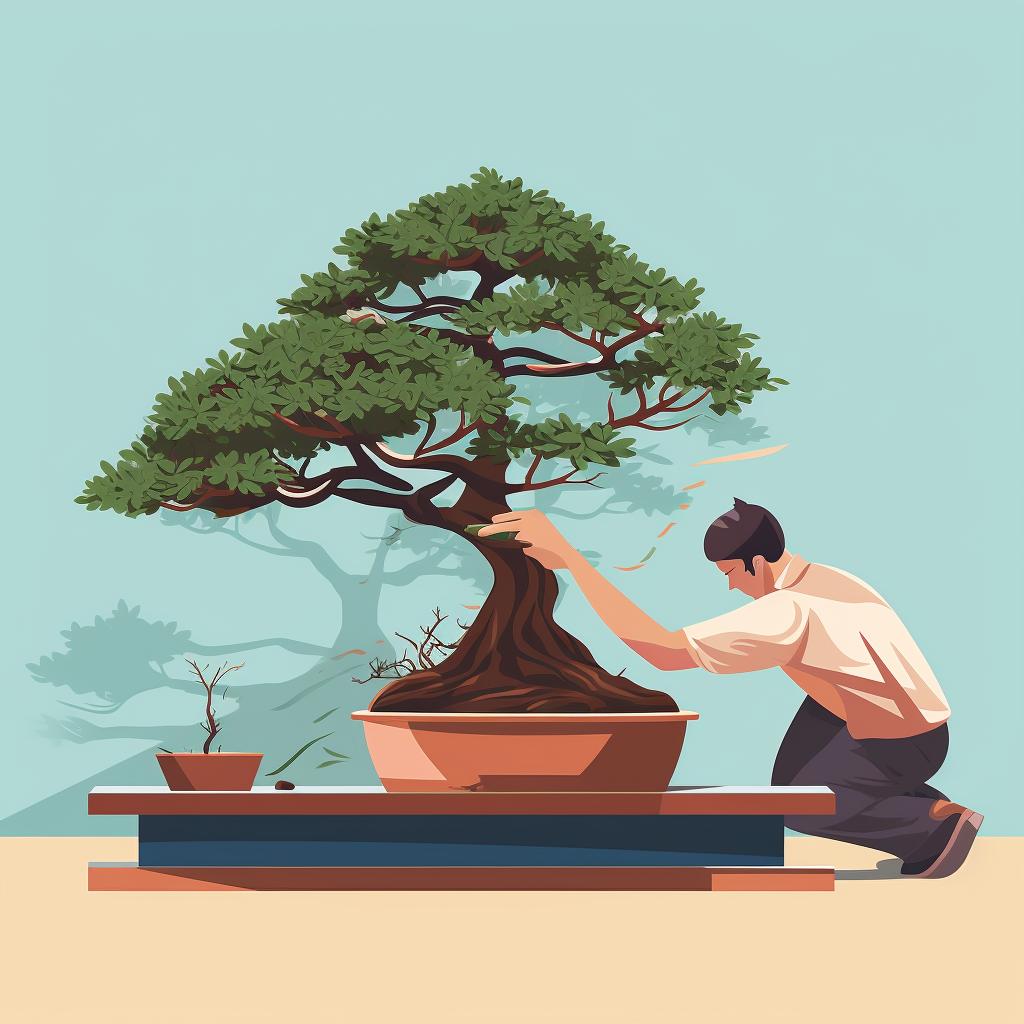Maximizing Bonsai Lifespan: A Step-by-Step Care Guide 🌳
Mastering the art of bonsai care is a rewarding journey that leads to the creation of living sculptures. Each step, from watering to repotting, is a mindful practice that connects you with nature and the ancient tradition of bonsai. Our step-by-step guide above provides a comprehensive approach to bonsai care. Let's delve deeper into each aspect to ensure your bonsai thrives and lives a long, healthy life.
Watering is a fundamental aspect of bonsai care. It's not just about the frequency, but also the technique. The goal is to ensure the soil is evenly moist, not waterlogged or dry. For more tips on proper watering techniques, refer to our FAQ on Bonsai Tree Care Basics.
Just like us, bonsai trees need nourishment to grow. Using a balanced bonsai fertilizer provides the essential nutrients your tree needs. However, each species has its own nutritional requirements. For example, the Cherry Blossom Bonsai has different needs compared to the Chinese Elm Bonsai. Understanding these differences will help you provide the best care for your tree.
Pruning is an art in itself. It helps maintain the shape of your bonsai and promotes healthy growth. But did you know that pruning also reveals the tree's character? It's through careful pruning that the bonsai's story unfolds. If you're unsure about how to start, our FAQ on Trimming a Bonsai Tree can guide you.
Finally, repotting is a crucial step in a bonsai tree's life. It allows you to manage the tree's root system and refresh the soil. This process is usually done every two to five years, but it can vary depending on the species and its growth rate. For instance, the Redwood Bonsai has a different repotting schedule compared to other species.
Remember, bonsai is not just about growing a tree in a pot. It's a journey of understanding and connection with nature. Each step you take in caring for your bonsai brings you closer to mastering this age-old art. So, immerse yourself, learn, and enjoy the process.













